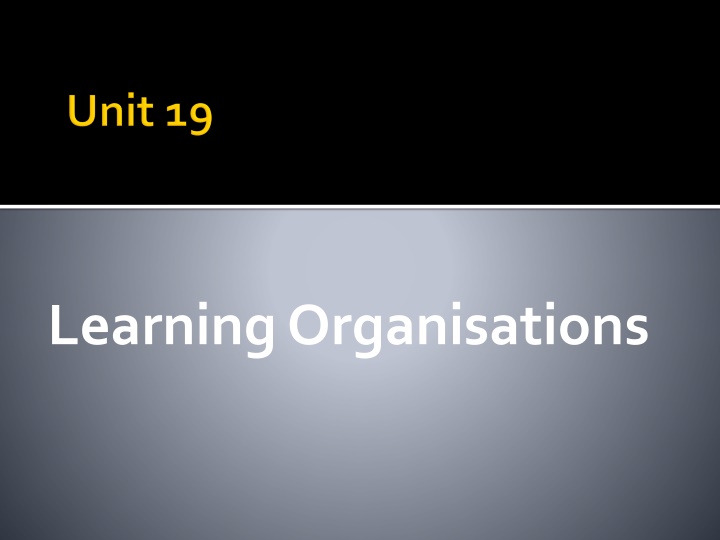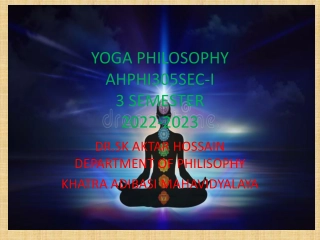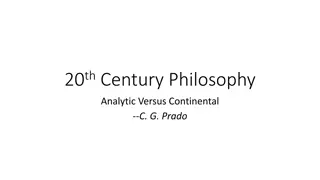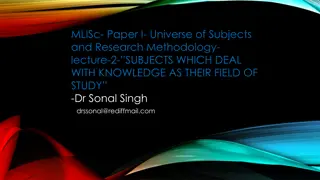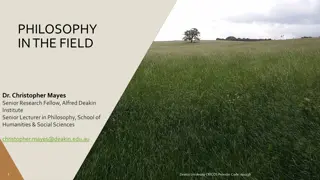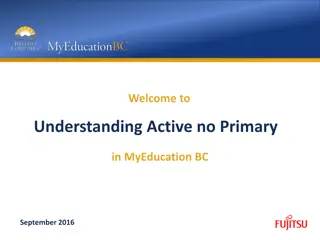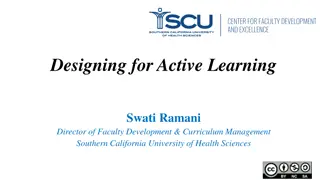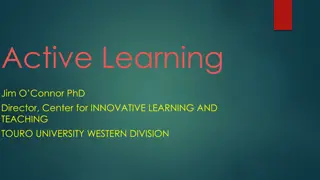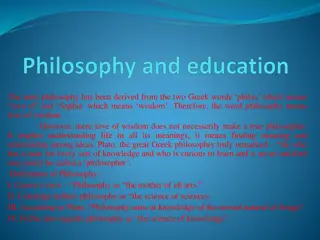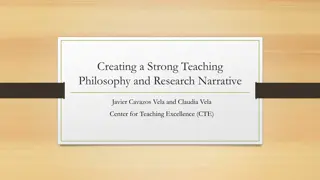Learning Organizations: An Active Philosophy and Application of Learning
The concept of learning organizations is not new, with roots dating back to Confucius. Garratt and Senge popularized the idea in the late '80s and early '90s, leading to a surge of interest in the topic. Argyris introduced the concept of double-loop learning, emphasizing transformational change. Definitions by Garwin and Ross advocate continuous knowledge testing and transformation within organizations.
Download Presentation

Please find below an Image/Link to download the presentation.
The content on the website is provided AS IS for your information and personal use only. It may not be sold, licensed, or shared on other websites without obtaining consent from the author.If you encounter any issues during the download, it is possible that the publisher has removed the file from their server.
You are allowed to download the files provided on this website for personal or commercial use, subject to the condition that they are used lawfully. All files are the property of their respective owners.
The content on the website is provided AS IS for your information and personal use only. It may not be sold, licensed, or shared on other websites without obtaining consent from the author.
E N D
Presentation Transcript
Introduction ConceptandDefinition LearningOrganisation-AnActivePhilosophy Characteristicsof LearningOrganisation ApplicationofLearninginOrganisations LearningDisabilities DevelopingtheLearningOrganisation FacilitatingandHinderingFactors
The importance of learning was first put forward by a Chinese philosopher, Confucius (551-479 BC) in these words: "Without learning, the wise become foolish; by learning, the foolish become wise". Learning refers to relatively permanent changes in behaviour occurringas a resultof experience. The concept of learning organisation is not new; many authors have talked about it from others and theirown pastexperiences.
Probably Garratt was the first to publish a book on thesubject in 1987. But the concept was popularised by Senge when his famous book "The Fifth Discipline" was released in 1990. Senge's book triggered a great deal of interest in thesubject oflearning organisations. A large number of publications appeared on the subjectduring thecurrentdecade.
In 1970s Argyris proposed the concept of a different qualitative learning. Contrasted with traditional learning, or the `single-loop'learrning (involving incremental change within an existing framework), `double-loop' learning emphasised testing of the underlying assumptions and achieving transformational change. Senge contrasted adaptive generativelearning. learning with
David Garwin defines a learning organisation as "an organisation skilled at creating, acquiring, and transferring knowledge, and at modifying its behaviour to reflect insights." new knowledge and
Ross, Smith, Roberts and Kleiner advocate this definition: "Learning in an organization means the continuous testing of experience, and the transformation of knowledge - accessible organization, and relevant toits corepurpose". that experience to into the whole
Meaning: Well-grounded definition of learning organisations; it must be actionable and easy to apply. Management: Clearer guidelines for practice, filled with operational advice rather than high aspirations. Measurement: Better tools for assessing an organisation's rate and level of learning to ensurethatgains in fact have been made.
A learningorganisation- Is an active organisational system. Believes that its only competitive advantage is learning. Encourages people to learn to produce the results they desire. Nurtures creative and innovative patterns of collectivelearning. philosophy; not merely an
A learningorganisation- Develops fresh organisational capabilities all the time.
1. Systematic Problem-solving: Relying on the scientific method rather than guesswork for diagnosing problems, Insisting on data rather than assumptions, as background for decision-making. Depending on simple statistical tools-to organise data and draw inferences.
2. Experimentation: Systematic searching for and testing of new knowledge. Continuous improvement in new methods and technologies. Successful ongoing programmes to ensure a steady flow of new ideas, even if imported from outside the organization.
2. Experimentation: Demonstration of organisational capabilities by introducing self-managing t teams and high level of worker autonomy. 3. Learning from Past Expeience: Companies must review their success and failures assess them systematically; and record lessons in a form that employees find open and accessible.
4. Learning fromOthers: Sometimes, the most powerful insights come from one's immediate outside environment. Even companies businesses can be fertile sources of ideas and catalysts for creativethinking. Best industry practices are to be uncovered, analysed, adopted, and implemented. in completely different
4. Learning fromOthers: The greatest benefits come from studying practices; the way work gets done rather than results.
Transferring Knowledge: Knowledge must spread quickly and efficiently throuhgout the organisation. Make use of mechanisms such as written and oral communications, site visits and tours, personnel rotation programmes, education and training programmes knowledge. for transferring
Transferring Knowledge: Transfer may be from .division to division, department to department, or facility to. facility; they may involve senior, middle, or first level managers.
Some of the common operational practices of learning organisations dealing with people are openness, systematic awareness of personal values, empathy, aid sensitivity. Senge who popularised the term learning organisation states. thinking, and creativity, organisational
Such organisations have the following five common characteristics 1. Personal Mastery: Creating an organisational environment, which encourages all its members to develop themselves purposes, theychoose. 2. Mental Models: Reflecting upon, continually clarifying, and improving internal pictures of the world,:. and seeing how they shape our actions and decisions. toward goals and
Such organisations have the following five common characteristics 3. Shared Vision: Building a sense of commitment in a group, by developing shared images of the future and guiding principles and practices. 4. Team Learning: Transforming conversational and collective thinking skills,- so that groups of people can reliably develop intelligence and ability greater than the sum of individual members' talents.
Such organisations have the following five common characteristics 5. Systems Thinking: Thinking about; and a language for describing and understanding forces and interrelationships that shapes the behaviourof systems.
Three incorporating involve training, organisational behaviour management,anddiscipline. systematic approaches in organisations to learning
Training: Training is the process through which people systematically acquire and improve the skills and knowledgeneededto better jobperformance. Many executive systematically attempt to develop the skills of their top managers. training programmes
Training: This is accomplished either by bringing in outside experts to train personnel in-house, or by sending them to conducted byonside agencies. specialised programmes
The principles that help in the effectiveness oftrainingare: 1. Participation: People not only learn more quickly, but also retain the skills longer when they have actively participated in the learning process. 2. Repetition: The benefits of repetition for learning new skills or performing a task need not beemphasised.
The principles that help in the effectiveness oftrainingare: 3. Transfer of training: What is learned during training sessions must be applied on thejob. 4. Feedback: It is extremely difficult for learning to occur in the absence of feedback-that is, knowledge of the results of one's actions. Feedback provides effectiveness ofone's training. information about the
Organisational Behaviour Management: It implies systematic application of positive reinforcement principles settings for the purpose of raising the incidence of desirable organisational behaviours. To be effective in using organisational behaviour management programmes, managers should. in organisational
Organisational Behaviour Management: 1. Pinpoint thedesired behaviour. 2. Determine exactly how will people perform the behaviourtheywish to change. 3. Determine exactly what performance goal is being sought. 4. Decide exactly how the desired behaviour will be rewarded.
Organisational Behaviour Management: 5. Facilitate learning by rewarding behaviours that come closer to the criterion. 6. Revaluate theprogramme periodically.
Discipline: Just as organisations systematically use rewards to encourage desirable behaviour, they also use punishment to behaviour. There are innumerable organisation such as absenteeism, late coming, theft, alcoholism, substance abuse, which cost companies vast sums ofmoney. discourage undesirable problems in an
Senge in his book has identified a number of learning disabilities. Some of them are listed below: The myth of teamwork (i.e., most teams operate belowthe leveloflowest IQ in thegroup), The delusion of learning from experience (i.e., attempting to understand the future by relying on the past, which means we solve the same problem over and over again, hence we make the problem worse).
To offset the learning disabilities, he has enunciatedlawsoftheFifthDiscipline: 1. Today's problems solutions. 2. The harder you push, the harder the system pushes back. 3. Behaviour growsbetter beforeit gets worse. 4. The curecan beworse than thedisease. come from yesterday's
To offset the learning disabilities, he has enunciatedlawsoftheFifthDiscipline: 5. The easy way outusually leads back in. 6. Faster is slower. 7. Cause and effect are not clearly related in form and space. 8. Small changes can,produce big results but the areas of highest learnings are often the least obvious.
To offset the learning disabilities, he has enunciatedlawsoftheFifthDiscipline: 9. You can have your cake and eat it too, but not alone. 10.Dividing the elephant in half does riot produce two small elephants. 11. Thereis no blame.
There developingthelearningorganisation. 1. First, leaders opportunities for learning. 2. Second, they must foster desirable norms and behaviours. 3. Third, they must personally lead the process of discussion, raise questions, listen attentively, and provide feedback. are three primary tasks toward and managers must create
Organisations learn only through individuals who learn. Individual learning organisational learning, but without it no organisation learning occurs approach that needs to be taken is that learning must be continuous and integrate understand and accept the need for change whichfinally resultsii improved work culture. does guarantee that employees
Based on a large number of case studies, Ramanarayan and Bhatnagar (1993) la the following factors that facilitate organisational learning: 1. Commitment to well-defined organisational priorities. 2. EffectiveHRD systems. 3. Mechanisms of collectivethinking.
Based on a large number of case studies, Ramanarayan and Bhatnagar (1993) la the following factors that facilitate organisational learning: 4. Flexible and participative leadership styles. 5. Collaboration and teamwork.
They also found the following factors that hinderorganisationallearning: 1. Culture of complacency arising from past successes. 2. Excessive bureaucratic and centralised methods of working leading to delay 3. Narrow definition of roles of organisational members in hierarchical organi leading to loss of creativity among employees.
They also found the following factors that hinderorganisationallearning: 4. Due to preoccupation firefighting functions, less attention usually given to important issues of change and innovation. with day-to-day
